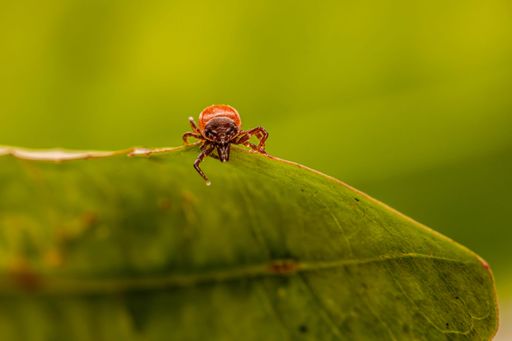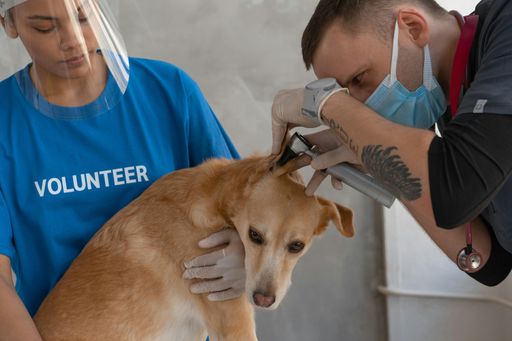Many medical marijuana experts and users agree that marijuana has some health benefits. Ever since the gradual recognition of its benefits for humans and legalization, pet owners have wondered if marijuana can benefit their pets.
The truth is that marijuana, which contains THC, the cannabinoid in marijuana that causes you to get “high,” is toxic to animals.
Young and small pets are the most susceptible to THC toxicity. Treatment for them is the most aggressive and could include lipid emulsion therapy, among other treatments.
Of course, the best thing is prevention. Stopping marijuana toxicity in your pet before it happens will ensure that your pet won’t get poisoned. Keeping your stash in a safe place and out of reach of your pet will keep them healthy.

How is THC Toxic to Animals?
In 2019, ASPCA (The American Society for the Prevention of Cruelty to Animals) experts observed toxicity in animals due to marijuana ingestion at an increase of over 765 percent. This occurred after a widespread acceptance of marijuana due to legalization for humans across the United States. It seems that pet owners believed that marijuana was beneficial to their pets since it was good for humans.
Not so.
Full-spectrum marijuana is toxic to pets. That’s because full-spectrum marijuana contains THC, and THC is toxic to animals.
Since dogs and cats have more cannabinoid receptors in their brains, THC has a severe effect on them. THC binds to those receptors and causes them to feel “high.”
There’s no official safe level of marijuana for animals. Any amount of THC is considered toxic. Be wary when smoking marijuana in a poorly ventilated room with your pet nearby. And, never blow smoke into your pet’s face. Marijuana second-hand smoke and the ingestion of edibles are the most common reasons for THC toxicity in animals.
Even when you buy weed seeds online, be sure to put them in a safe place before planting. The seeds are just as toxic to your pet as the plant.
How to Know if Your Pet is Suffering from Marijuana Intoxication
The first signs of marijuana intoxication in your pet are depression, ataxia, mydriasis, bradycardia, hypothermia, and urinary incontinence. Beyond that, animals can experience agitation, tachycardia, seizures, and coma. Because of these reasons, keeping marijuana away from pets is critical.
In most cases, marijuana toxicity in pets is not common. But, it’s essential to know its symptoms and whether or not to take your furry friend to the vet.
Common symptoms of marijuana ingestion in pets include:
- Lethargy
- Depression
- Incoordination or walking wobbly/drunk
- Drooling
- Vomiting
- Disorientation
- Urinary incontinence
- Hypothermia
- Vocalization
- Low heart rate
- Body tremors
- Low blood pressure
- Dilated pupils
- Respiratory depression
- Body tremors
- Seizures
- Excitability
If your pet shows any of these symptoms, it’s essential to get them to a veterinarian immediately.

What is the Treatment for Marijuana Toxicity in Pets?
Marijuana toxicity in pets is a medical condition that requires immediate veterinarian attention. If you notice that part of your stash is gone and your dog or cat shows symptoms of marijuana intoxication, take them to your vet immediately.
Treatment for marijuana intoxication in animals varies according to their symptoms. When you take your pet to your vet, the first thing they should do is find out how much your pet ingested, and in what form. For example, marijuana can be smoked in a joint using bud or flower, or ingested with edibles. Cats tend to prefer weed or flowers, while dogs mostly go for edibles because they are like candy and baked goods.
Once your vet gets the information they need, they will assess your pet’s health condition and decide whether they should induce vomiting or pump your pet’s stomach. This is only done before signs of marijuana toxication.
Beyond that, your vet may include in your pet’s treatment anti-vomiting medication, IV fluids, thermoregulation, anti-anxiety medication, nursing care, and monitoring with an electrocardiogram and blood pressure machine.
Your vet may also administer activated charcoal if your pet is no longer vomiting or in a coma. Activated charcoal can reduce enterohepatic recirculation of a toxic substance, meaning it can’t reabsorb into the body.
How to Prevent Marijuana Toxicity in Your Pet
Hide your stash. You wouldn’t leave it out in the open if you had a baby in your home, so don’t leave it where your dog or cat can get to it. You need to “baby-proof” your home if you’re going to have marijuana in it. That means if you hide your marijuana in a low cabinet, you’ll need to put a baby lock on it. Dogs, and especially cats, are quite savvy at opening the cabinet doors.
Dogs and cats are naturally curious animals, and they’ll follow smells that are nearby out of that curiosity. If they like the smell, they could eat whatever it is they found. Marijuana, especially bud or flower, has a distinct aroma that dogs and cats love. So, keep it away from them.
Edibles are another story. Often edibles come as cookies, candy, and other baked goods. Dogs love them because they’re just like eating a treat. These, too, need to be stored in a safe place. Perhaps, since it’s food, you could store your edibles in the refrigerator. There’s no way your pooch could get in there.
In Conclusion
The bottom line is that the THC in marijuana is toxic to animals. Blowing marijuana smoke in your pet’s face may seem funny at first, but when your pet is suffering from marijuana toxicity, you won’t be laughing. Ensure that your pet stays healthy by storing your stash in a safe place. Keeping your marijuana in a plastic or sealed container is a great way to stop your pet from smelling the aroma.
If your pet does get into your stash, take them to a veterinarian immediately. Marijuana toxicity in pets is considered an emergency that needs to be addressed as quickly as possible, as toxicity can lead to coma and even death.



















